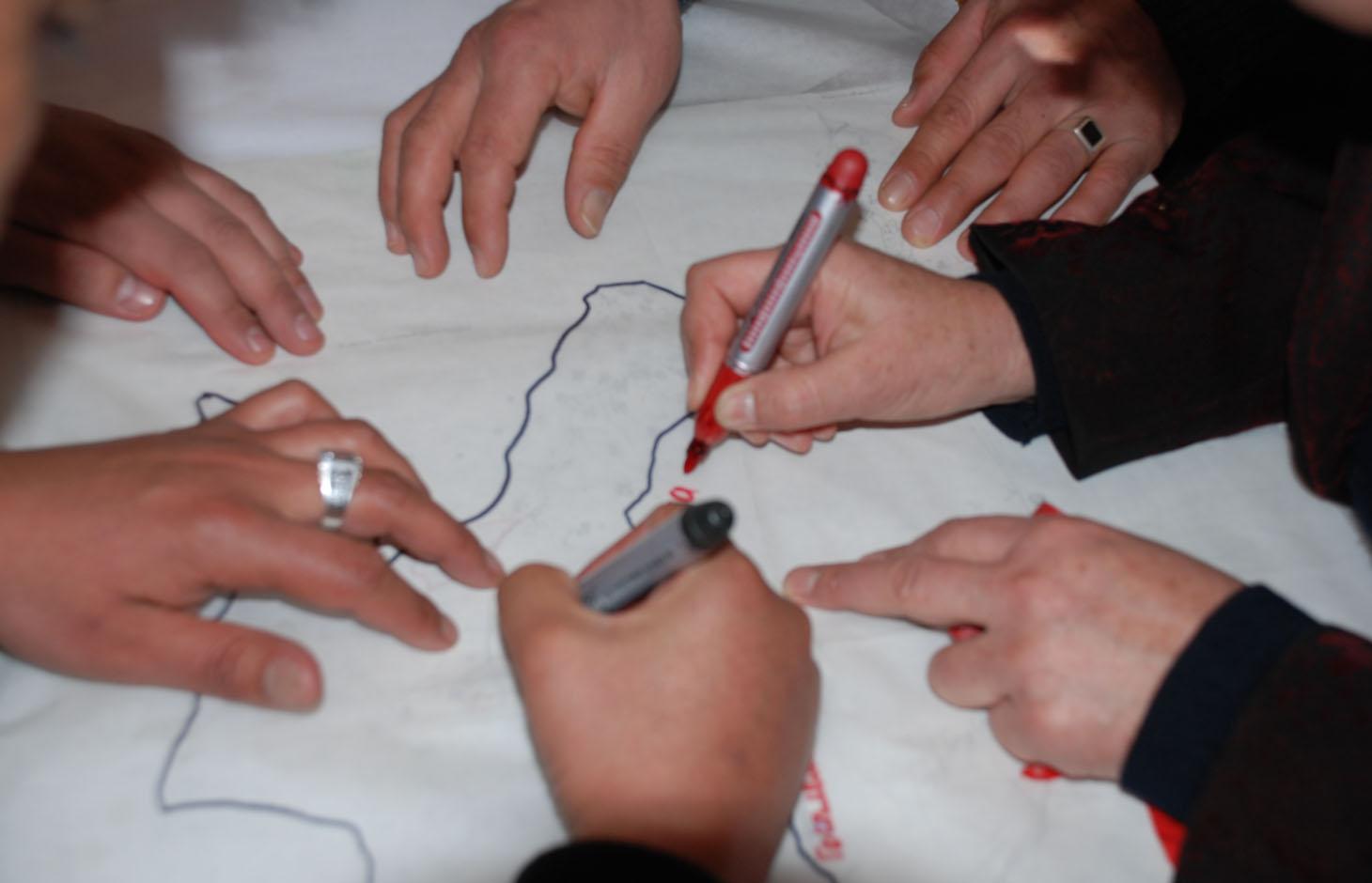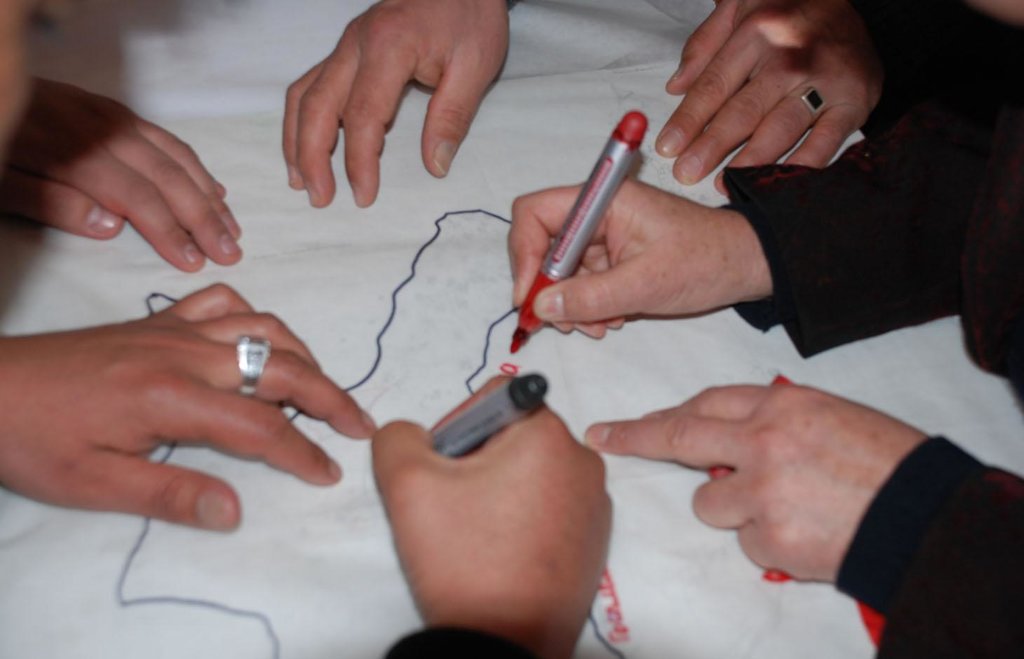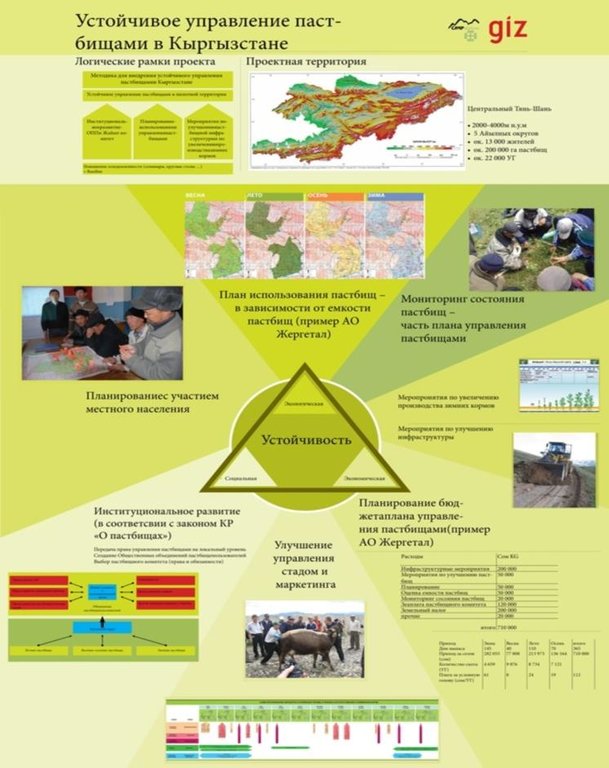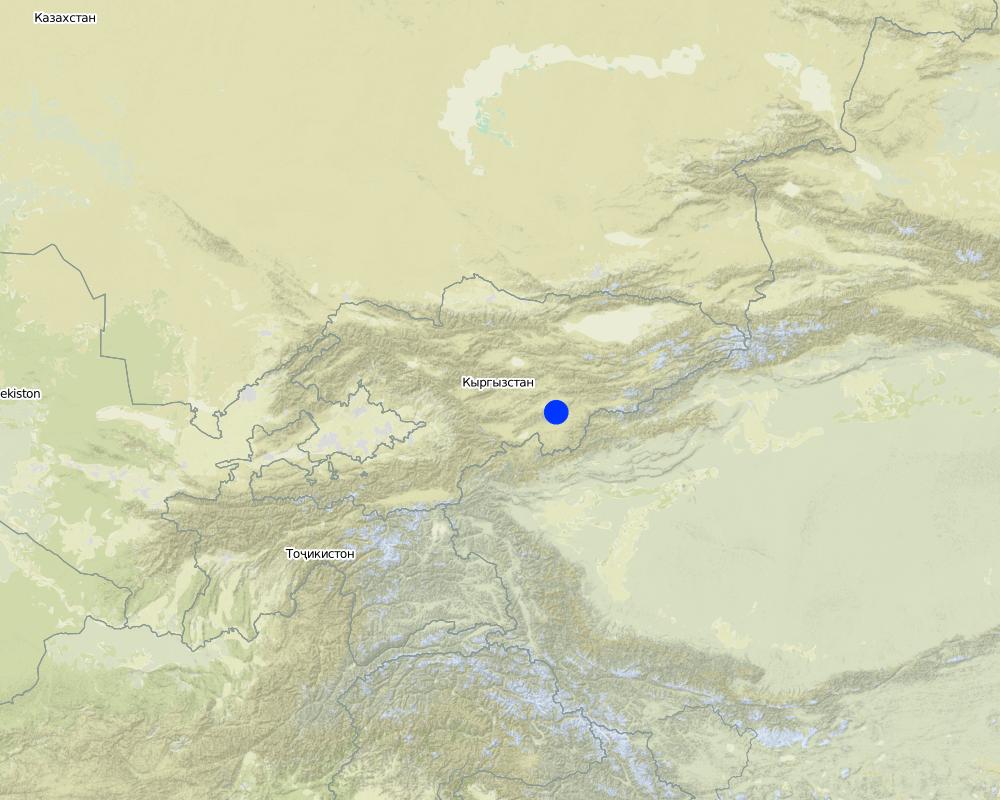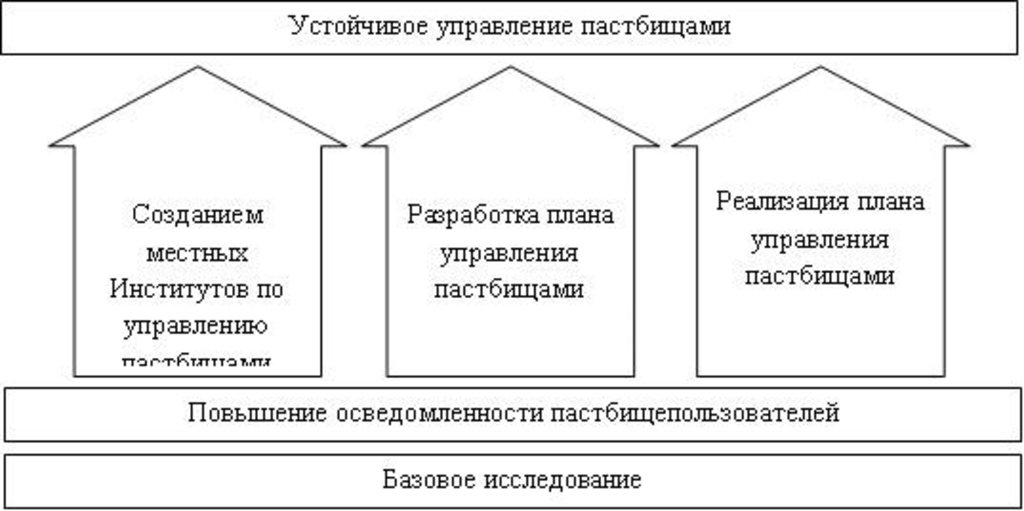Joint pasture management [Kyrgyzstan]
- Creation:
- Update:
- Compiler: Azamat Isakov
- Editor: –
- Reviewer: Alexandra Gavilano
Central Asian Countries Initiative on Land Management. (CACILM/ИСЦАУЗР)
approaches_2457 - Kyrgyzstan
View sections
Expand all Collapse all1. General information
1.3 Conditions regarding the use of data documented through WOCAT
The compiler and key resource person(s) accept the conditions regarding the use of data documented through WOCAT:
Yes
2. Description of the SLM Approach
2.1 Short description of the Approach
The aim of this approach is the joint management of pastures t by considering opinions of pasture users with the view of prevention and mitigation of pasture degradation and an improvement in the living conditions of local communities (in the frame of CACILM).
2.2 Detailed description of the Approach
Detailed description of the Approach:
Aims / objectives: Resolution of the degradation and erosion-related problems through sustainable community-based pasture management. The suggested approach is based on the participation of the local population in pasture management by imposing responsibilities on them for the safekeeping and preserving of pastures. A selected part of this approach concerning the development of pasture use plans, was described in a separate approach called “Joint pasture use planning” (WOCAT QAKYR002e)
Methods: Until the adoption of the law “On pastures” in 2009, the responsibilities were shared in the following ways: the oblast state administrations were responsible for the remote pastures; the rayon administrations for intensive pastures; and the village administrations for the near-to-village pastures. After the law’s adoption in 2009, all the authority pertaining to pasture management of all categories was delegated to the bodies of local self-government. In turn, they delegated their pasture management authority to the Pasture Users Associations (PUA), represented by the Pasture Committees. This law became a key factor in the implementation of this approach
Stages of implementation: Implementation of the approach was started by conducting a baseline survey in the pilot territory by the Swiss National Centre of Competence in Research NCCR North-South. 2) Moderators of the public foundation CAMP Ala-Too conducted L4S (learning for sustainability) workshops for pasture users. 3) The outcome of the workshops conducted was the formation of the initiative group to create the PUA. 4) The initiative group dealt with the legalization of this institution, and, as a result, the PUA was established along with its executive body, the Pasture Committee, which develops pasture management plans. 5) Currently, the Pasture Committees monitor the pasture state, the outcomes of which must serve as the basis for the development of a pasture management plan in future
Role of stakeholders: 1. The project “Sustainable pasture management within the river basins of Jergetal and Onarcha”: The joint pasture management approach was implemented within the framework of this project. 2) PF CAMP Ala-Too: executor of the project. 3) Local self-government bodies have delegated the pasture management rights to the PUAs, which allowed them to fully implement the approach. 4) As per the legislation “On pastures”, local communities have the right to establish PUAs with their representative bodies, Pasture Committees. 5) The Pasture Department of the Ministry of Agriculture has ensured support from the Oblast Pasture Department. 6) Experts from the Rural Advisory Service and the Agency for Rural Development and Investment have been trained on separate components of the approach to be disseminated throughout the whole country
Other important information: This approach was implemented by PF CAMP Ala-Too within the framework of the regional program “Sustainable use of natural resources in Central Asia”, implemented by GIZ
2.3 Photos of the Approach
2.5 Country/ region/ locations where the Approach has been applied
Country:
Kyrgyzstan
Region/ State/ Province:
Naryn
Further specification of location:
Naryn
Map
×2.6 Dates of initiation and termination of the Approach
Indicate year of initiation:
2008
Year of termination (if Approach is no longer applied):
2011
2.7 Type of Approach
- project/ programme based
2.8 Main aims/ objectives of the Approach
The Approach focused mainly on SLM with other activities (The baseline survey; awareness building; establishment of local institutes responsible for pasture management; monitoring of pastures; elaboration of pasture use plans; elaboration of pasture management plans)
Decrease in the degradation and erosion of pastures, and improvement of the living conditions of local communities through sustainable community-based pasture management
The SLM Approach addressed the following problems: Pasture degradation was a problem because sustainable pasture management was impossible to implement due to the three-level pasture management system.
2.9 Conditions enabling or hindering implementation of the Technology/ Technologies applied under the Approach
social/ cultural/ religious norms and values
- hindering
Lack of experience on the part of local communities in managing natural resources. They were not involved in the process earlier.
Treatment through the SLM Approach: Increased awareness among the population through workshops and meetings about the processes of the decentralization of the management of natural resources and its importance for local communities
availability/ access to financial resources and services
- hindering
Financial basis for implementation of this approach is fee payment for livestock grazing by pasture users. Pasture users do not always pay for pasture tickets.
Treatment through the SLM Approach: Provision of transparency of the Pasture Committee’s budget through reporting at the meetings; demonstration of effective activity of the Pasture Committee through improvement of the state and infrastructure of the pastures.
institutional setting
It was impossible to jointly plan the pasture use with the three-level pasture management system, which had been existing until 2009
Treatment through the SLM Approach: in 2009 all authority pertaining to the management of pastures of all categories was delegated to the bodies of local self-government. In turn, they delegated their pasture management authorities to the PUA represented by the Pasture Committees.
legal framework (land tenure, land and water use rights)
- enabling
The existing land ownership, land use rights / water rights greatly helped the approach implementation: This approach corresponds fully to existing legislation of the Kyrgyz Republic.
- hindering
Old Law \'On pasture\' does not ensure sustainabe pasture management
Treatment through the SLM Approach: Adoption a new Law \'On pasture\' in 2009.
knowledge about SLM, access to technical support
- hindering
However, it should be noted that the Pasture Committee’s members are common villagers and they do not have the capacity to implement the objectives stated in the law “On pastures”.
Treatment through the SLM Approach: Approach provides training activities for Pasture Committee members on pasture monitoring; pasture use planning; development of pasture management plans; cost calculation of the pasture tickets. The training courses were conducted by CAMP Ala-Too
3. Participation and roles of stakeholders involved
3.2 Involvement of local land users/ local communities in the different phases of the Approach
| Involvement of local land users/ local communities | Specify who was involved and describe activities | |
|---|---|---|
| initiation/ motivation | interactive | Increase awareness of pasture users through workshops, round tables and meetings with specialists |
| planning | interactive | Each stage of the approach was discussed with the local communities and decisions were taken jointly |
| implementation | self-mobilization | The Pasture Committee participated in all stages of implementation of the approach |
| monitoring/ evaluation | self-mobilization | The Pasture Committee monitored the execution of the pasture use plans on a quarterly basis and pasture management plans once a year. |
| Research | interactive | The baseline survey and collection of primary data was done by the specialists together with the pasture users. |
3.3 Flow chart (if available)
Description:
Подход совместного управления пастбищами
Author:
Общественный фонд САМР Ала-Тоо. (Общественный фонд САМР Ала-Тоо. г. Бишкек ул. Ошск)
3.4 Decision-making on the selection of SLM Technology/ Technologies
Specify who decided on the selection of the Technology/ Technologies to be implemented:
- mainly SLM specialists, following consultation with land users
Explain:
The project specialists, in cooperation with the pasture users, have conducted baseline surveys in the pilot territories. The project specialists have developed the following technologies and methods: joint planning; monitoring of pastures; cost calculation of pasture tickets; monitoring of the pasture management plans’ realization.
Decisions on the method of implementing the SLM Technology were made by mainly by land users supported by SLM specialists. In the course of implementing the technologies by the Pasture Committees, the specialists will provide technical support, advice and follow-up action
4. Technical support, capacity building, and knowledge management
4.1 Capacity building/ training
Was training provided to land users/ other stakeholders?
Yes
Specify who was trained:
- land users
- field staff/ advisers
Form of training:
- on-the-job
- farmer-to-farmer
- demonstration areas
- public meetings
Form of training:
- Workshops
Subjects covered:
Training of trainers and training on this approach was conducted for pasture users from the pilot region by the local advisory services. The approach includes creating awareness; training on pasture monitoring; pasture use planning; calculation of budget for pasture management plan and the cost of pasture tickets.
4.2 Advisory service
Do land users have access to an advisory service?
Yes
Describe/ comments:
Name of method used for advisory service: ; Key elements: , ,
4.3 Institution strengthening (organizational development)
Have institutions been established or strengthened through the Approach?
- yes, moderately
Specify the level(s) at which institutions have been strengthened or established:
- local
Specify type of support:
- capacity building/ training
- equipment
Give further details:
All meetings and workshops were financed by the project. All the equipment and tools, which were necessary for the Pasture Committees, were also provided by the Project.
4.4 Monitoring and evaluation
Is monitoring and evaluation part of the Approach?
Yes
Comments:
bio-physical aspects were regular monitored by project staff through measurements; indicators: Dynamics of biophysical changes (monitoring of the pastures’ state)
technical aspects were regular monitored by land users through observations; indicators: % of the observance of the grazing schedule and pasture use plan (monitoring)………………
economic / production aspects were regular monitored by project staff through measurements; indicators: Cattle condition
no. of land users involved aspects were regular monitored by project staff through measurements; indicators: % of the involved pasture users
management of Approach aspects were regular monitored by project staff through measurements; indicators: Number of Pasture Committees applying this approach
There were no changes in the Approach as a result of monitoring and evaluation: None
4.5 Research
Was research part of the Approach?
Yes
Specify topics:
- sociology
- economics / marketing
- ecology
Give further details and indicate who did the research:
Within the baseline survey in the pilot territories, which was conducted by the Swiss National Centre for Competence in Research NCCR North-South, the background socio-economic and ecological situations were explored and analysed
Research was carried out both on station and on-farm
5. Financing and external material support
5.1 Annual budget for the SLM component of the Approach
If precise annual budget is not known, indicate range:
- 100,000-1,000,000
Comments (e.g. main sources of funding/ major donors):
Approach costs were met by the following donors: international (The approach was implemented at the expense of GIZ): 100.0%
5.3 Subsidies for specific inputs (including labour)
Comments:
Members of the Pasture Committees receive salaries from the income gained from the sale of pasture tickets.
5.4 Credit
Was credit provided under the Approach for SLM activities?
No
6. Impact analysis and concluding statements
6.1 Impacts of the Approach
Did the Approach help land users to implement and maintain SLM Technologies?
- No
- Yes, little
- Yes, moderately
- Yes, greatly
Introduction of this approach facilitated the improvement of 250000 ha of pastures in the pilot territory; reduction of the pasture pressure by conflict management between the pasture users.
Did the Approach empower socially and economically disadvantaged groups?
- No
- Yes, little
- Yes, moderately
- Yes, greatly
Poor segments of the population along with others have access to all categories of pastures.
Did other land users / projects adopt the Approach?
- No
- Yes, little
- Yes, moderately
- Yes, greatly
The World Bank “Agricultural Investment Services Project”, component “pasture management”. Within the framework of this project, a manual for Pasture Committees on development of pasture management plans was designed for the use of this approach. All 454 Pasture Committees of the Kyrgyz Republic work according to this manual.
Did the Approach lead to improved livelihoods / human well-being?
- No
- Yes, little
- Yes, moderately
- Yes, greatly
Joint pasture management prevents not only pasture degradation, but also leads to improvement of the livestock condition, which in turn provides stable income.
Did the Approach help to alleviate poverty?
- No
- Yes, little
- Yes, moderately
- Yes, greatly
The approach has provided a stable approach to livestock breeding.
6.2 Main motivation of land users to implement SLM
- increased profit(ability), improved cost-benefit-ratio
The approach facilitates an increase in income
- rules and regulations (fines)/ enforcement
The law binds the Pasture Committee to create pasture management plans, monitor the pasture state, i
- prestige, social pressure/ social cohesion
Пастбищепользователи имеют не только формально, но и фактически,одинаковые права и обязанности
- affiliation to movement/ project/ group/ networks
The approach was tested within the framework of the pilot project
- environmental consciousness, moral, health
Acknowledgement of ecological problems
- well-being and livelihoods improvement
Household income is increasing
6.3 Sustainability of Approach activities
Can the land users sustain what has been implemented through the Approach (without external support)?
- yes
If yes, describe how:
The approach foresees the establishment of Pasture Committees – institutes, which are responsible for pasture management at the local level. The funding mechanism of these institutes is stipulated by legislation of the Kyrgyz Republic and is based on fees paid by the pasture users for livestock grazing. These payments form the budget of the Pasture Committee.
6.4 Strengths/ advantages of the Approach
| Strengths/ advantages/ opportunities in the land user’s view |
|---|
| Достижение стабильного дохода от животноводства |
| Способность местного сообщества планировать управление пастбищами и бюджет Пастбищного комитета (How to sustain/ enhance this strength: Обеспечение прозрачности бюджета Пастбищного комитета) |
| Strengths/ advantages/ opportunities in the compiler’s or other key resource person’s view |
|---|
| Участие местного сообщества в управлении природными ресурсами, что может повысить их ответственность за эти ресурсы. (How to sustain/ enhance this strength: Привлечение большего количества людей, насколько это возможно) |
| Сокращение и предупреждение деградации пастбищ, сохранение и восстановление пастбищных экосистем (How to sustain/ enhance this strength: Повышение потенциала Пастбищного комитета ) |
| Внедрение платы за использование пастбищ (How to sustain/ enhance this strength: Обеспечение консультационными услугами Пастбищных комитетов) |
6.5 Weaknesses/ disadvantages of the Approach and ways of overcoming them
| Weaknesses/ disadvantages/ risks in the compiler’s or other key resource person’s view | How can they be overcome? |
|---|---|
| Реализация подхода требует определенных навыков и потенциала, чего не всегда хватает Пастбищным комитетам | Путем проведения обучения для повышения потенциала Пастбищных комитетов |
| Требуются базовые материалы и базовые данные для реализации подхода (например: информация о площади пастбищ, карты пастбищ и т.д.) | Пастбищные комитеты могут купить данные материалы у Кыргызгипрозема |
7. References and links
7.2 References to available publications
Title, author, year, ISBN:
Kulov S. 2007: Total Economic Valuation of Kyrgyzstan Pastoralism, World Initiativ for Sustainable Pastoralism, Global Environmental Facility, UNDP, IUCN.
Penkina L.M. Natural pastures and ethno-cultural traditions
Busler S. “Community based pasture management in Kyrgyzstan” Bishkek, 2011
Law of the Kyrgyz Republic “On pastures” as of 26 January 2009 #30
Available from where? Costs?
ftp://ftp.fao.org/docrep/nonfao/lead/x6400r/x6400r00.pdf
www.camp.kg
www.toktom.kg
Links and modules
Expand all Collapse allLinks
No links
Modules
No modules


